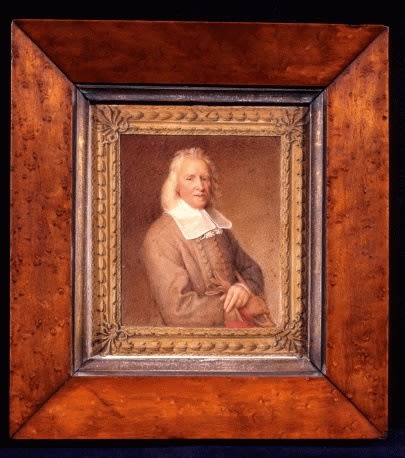
George Perfect Harding
To view all current artworks for sale visit philipmould.com
George Perfect Harding specialised in the 1820s to the 1840s in producing watercolour reductions of historical portraits. This example, after the portrait by Jacob Huysmans painted c.1675 now in the collection of the National Portrait Gallery, London, is typical of his work.
Walton is famous as the author of The Compleat Angler (1653), a pastoral elegy on the delights and pleasures of fishing, one of the most frequently reprinted books in the English language. Despite it innocuous character, Walton’s interest in angling was fostered by the need to escape – mentally and physically – from the tribulations of the time through which he lived. He remained a staunch royalist after the outbreak of the Civil War in 1645, and in 1651 while he was writing his magnum opus he his one of King Charles II’s rings for a friend, a courageous and potentially fatal act. The streams and rivers of Hampshire around Norrington Farm where Walton lived must have attained an almost magical significance for him set against the tumult of the world without. His great friend George Morley sought refuge with him there, and later after he was promoted Bishop of Winchester he gave Walton lodgings in the episcopal Palace. Walton died in 1683 and was buried in Winchester Cathedral.